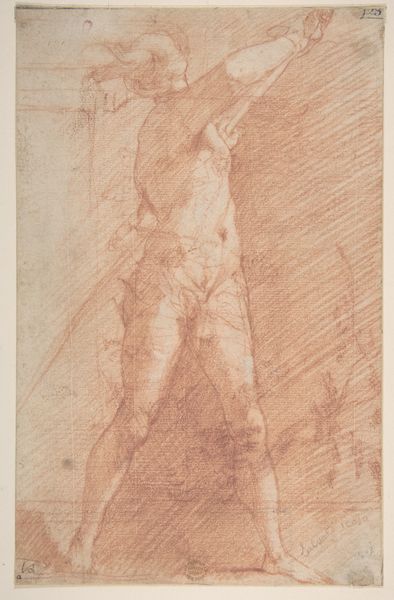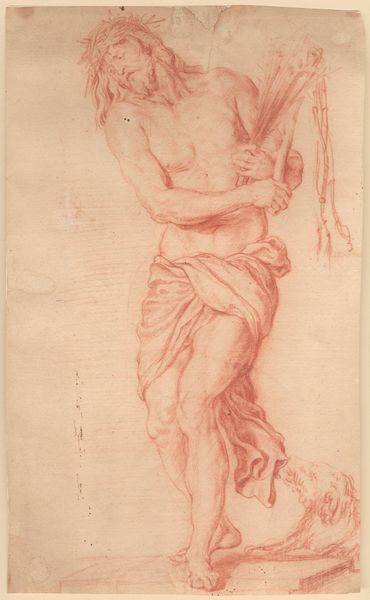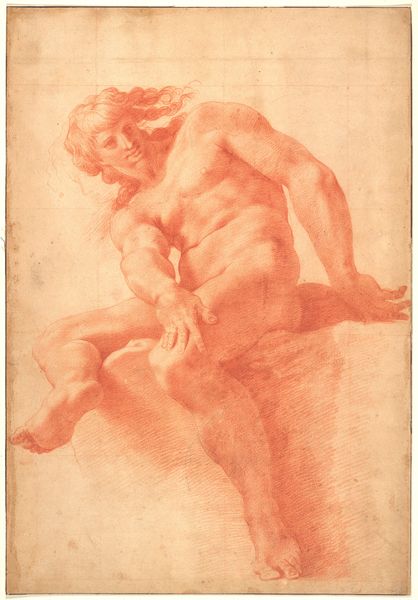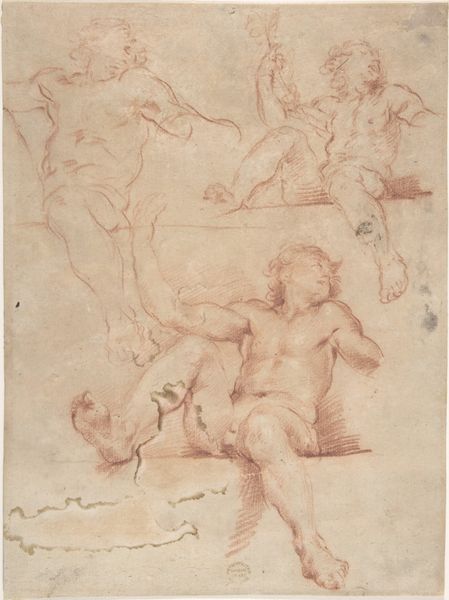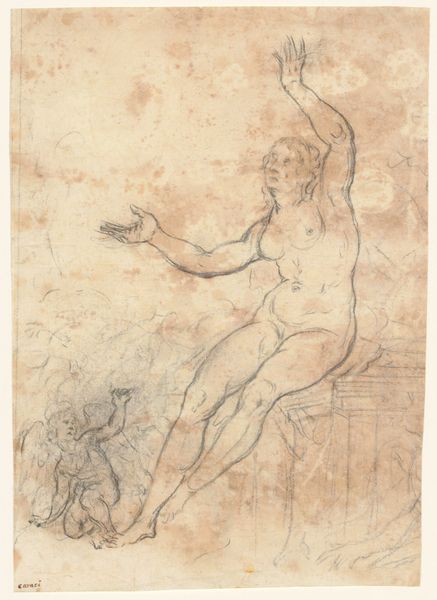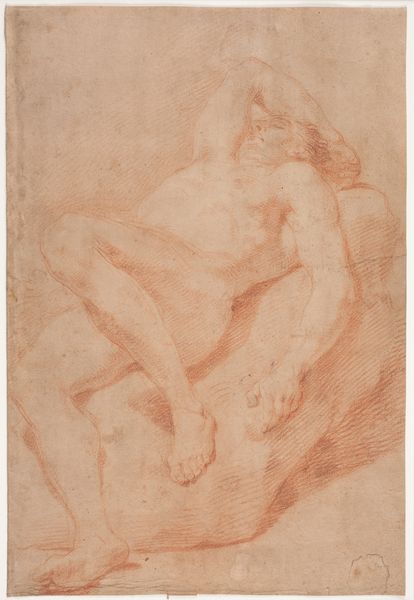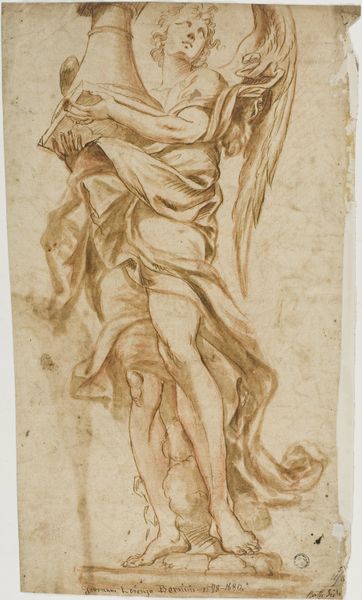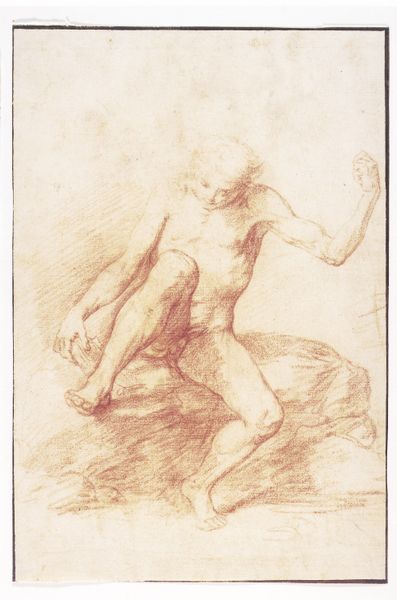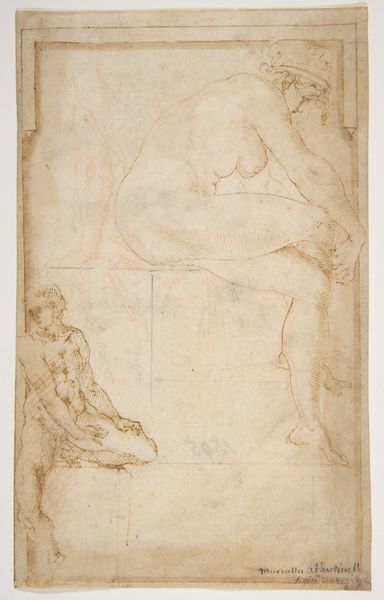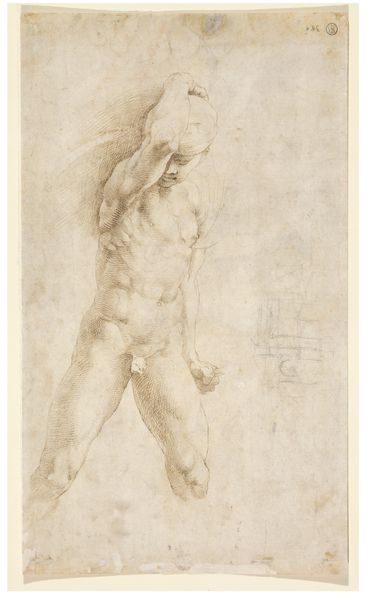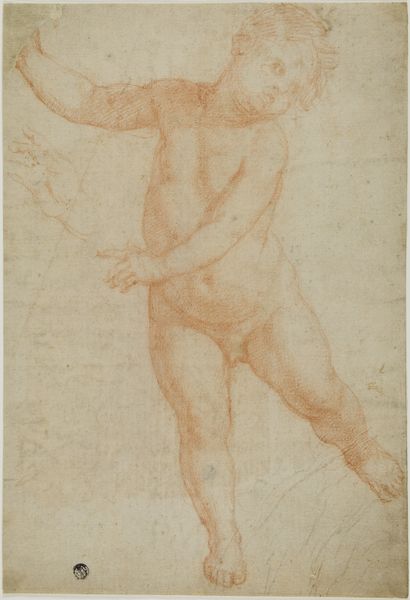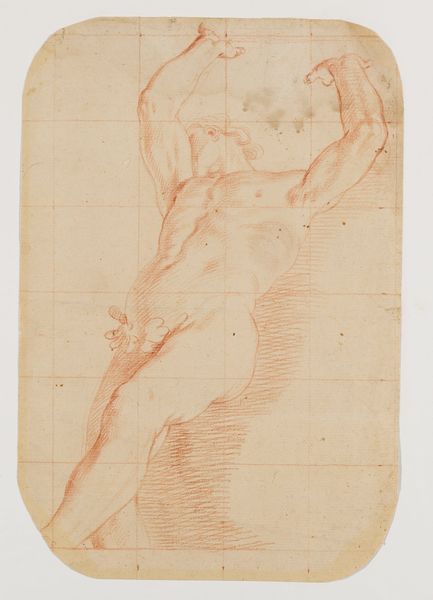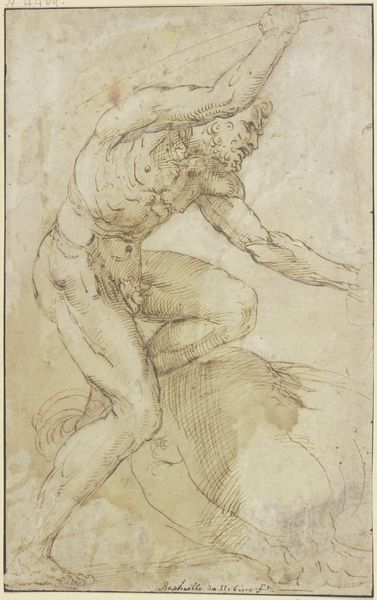
Studies for an Angel in Glory 1575 - 1633
0:00
0:00
drawing, print, pencil
#
portrait
#
drawing
# print
#
pencil sketch
#
charcoal drawing
#
11_renaissance
#
pencil drawing
#
pencil
#
academic-art
#
italian-renaissance
#
watercolor
Dimensions: 14 x 9 15/16in. (35.6 x 25.2cm)
Copyright: Public Domain
Curator: Here we have “Studies for an Angel in Glory” by Antonio d'Enrico Tanzio, also known as Tanzio da Varallo, dating back to the period between 1575 and 1633. The piece is rendered in pencil. Editor: It has such a raw, immediate quality! The figure reaching upwards feels quite vulnerable, almost pleading. I’m struck by how the grid underneath remains visible. Curator: Indeed! Let's consider the materiality and labor involved. The visible grid suggests the preparatory work crucial to the final creation, acting as a structured armature of the paper before receiving artistic marks of charcoal. This reveals the means of artistic production that rarely get the spotlight. The red pencil marks were typical media of the period, inexpensive and suitable for quickly laying down ideas. Editor: And what ideas they were exploring! We're presented with a figure caught in a moment of ecstasy or perhaps terror, positioned against this almost clinical grid. Is this angel one of salvation or destruction? It sits at an intersection of renaissance aspirations and perhaps some early modern anxieties beginning to seep in. And the isolation of these anatomical studies... they hint at broader societal concerns about the body, knowledge, and the human condition during this period. Curator: I agree; the study of the anatomy, alongside the economic aspects of materials themselves, provides essential context. The sketch appears more grounded when you recognize these studies allowed for both economical reproduction on paper and in frescos by a workshop which often reified status. This art was for patrons seeking glory and this piece brings out class structure not normally accessible if we just looked at "angel." Editor: It's fascinating how examining the material choices forces us to ask who could have afforded them. It reshapes the narratives of the period—who commissioned the work, for whom it was intended, and what ideological agendas are present? Curator: This gives us something tangible to sink our teeth into. Instead of focusing on an angelic figure as pure spiritual symbol, we are invited to think of the labor, consumption, patronage and societal constructs which create it. Editor: Right. Seeing the art less as a holy vision and more of a produced commodity allows us to critically investigate how notions of "glory" were constructed and who benefited from it. Curator: Exactly! It highlights the processes that led to what became valued and commodified as ‘art’, in the upper classes during that time. Editor: It forces us to wrestle with questions of value—both artistic and social—which continue to resonate today. Curator: Yes, a great glimpse into what lay behind even an angel in glory during that era!
Comments
No comments
Be the first to comment and join the conversation on the ultimate creative platform.
